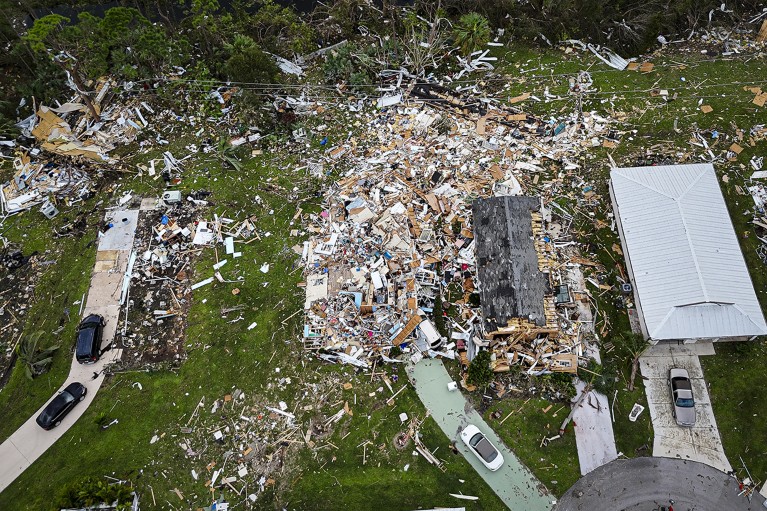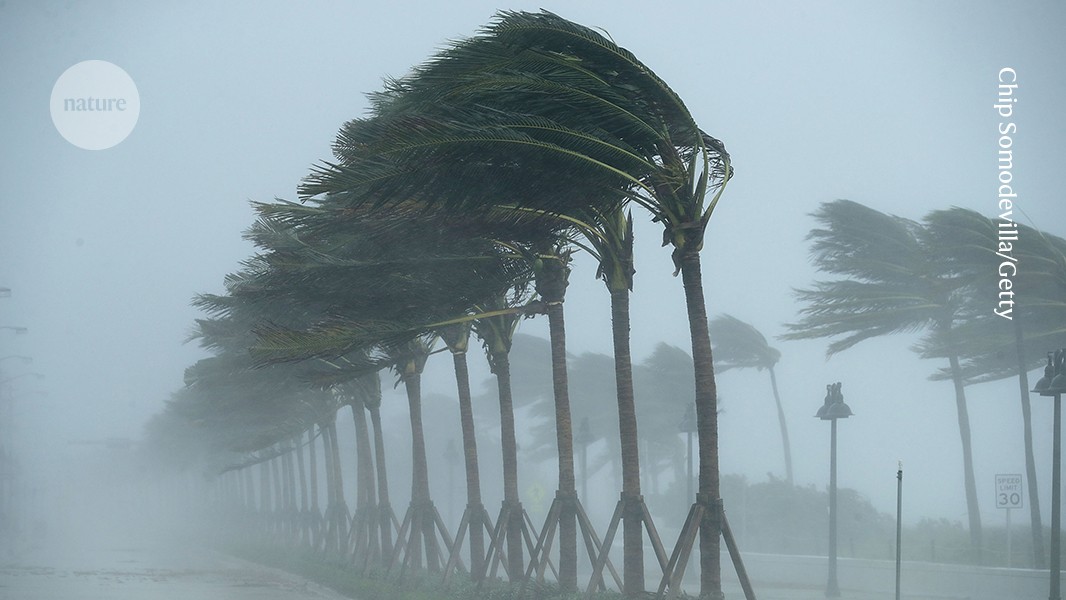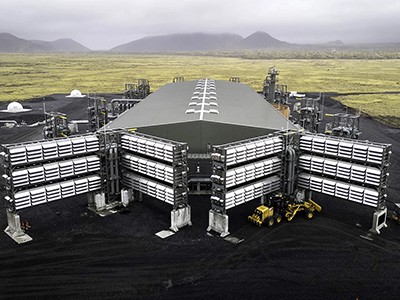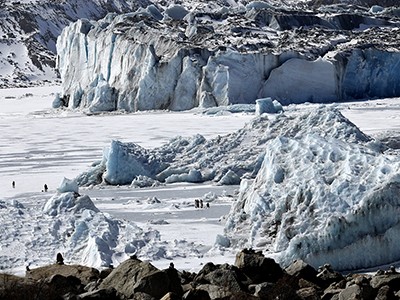Economic losses from hurricanes have been growing in the United States and elsewhere. From 1980 to today, hurricanes have accounted for US$1.5 trillion in US economic losses, out of a total of $2.9 trillion for all weather and climate hazards combined, and more than one-quarter (28%) of insured losses (see go.nature.com/4txjsfj).
Although much of the increase is due to economic growth and property development in hurricane-prone coastal regions, there is probably also a component caused by human-induced climate change. And whereas researchers know a lot about how hurricanes and climate change work, and what to expect, there’s also a lot that we don’t know.
The scientific literature focuses on how specifics such as hurricane frequency, intensity and precipitation might be affected by climate change, without combining them into a comprehensive assessment. There’s a good reason for this: the uncertainties for each aspect are different and thus deserving of separate treatment. But this piecemeal approach leaves the overall trend unclear.
Six roadblocks to net zero — and how to get around them
Other uncertainties are partially recognized by researchers and risk managers, including the regional impacts of climate change. And too much weight is put on past climate trends, which is inappropriate when there are a lot of ‘known unknowns’.
The total hazard — the geophysical component of risk, comprising the probabilities of hurricanes with given levels of wind, rain and storm surges — remains hard to evaluate. The literature is unclear as to whether risks overall will worsen or even diminish, let alone by how much. Nonetheless, information on this risk is crucial to decisions taken about how to price, transfer and adapt to it.
Here, we offer a qualitative view of US hurricane hazard, now and in the near future. Although a rigorous quantification would be desirable in principle, it would be challenging and involve some subjectivity, given the different natures of all the uncertainties. In general, uncertainty increases risk. And we leave related changes in exposure and vulnerability, for example due to demographic or socio-economic changes, to further work.
Our overall opinion is that present US hurricane hazard is greater than the longer-term historical average, due to a combination of well-understood factors that increase hazard and poorly understood ones that might increase it, even if we are not certain that they do.
Risk factors
Here we summarize what is known about how climate change affects the various aspects of hurricane hazard, in roughly decreasing order of confidence.
Precipitation. Historically, most of the focus of hurricane forecasts and risk assessments has been wind, yet water is the largest source of damage and mortality in hurricanes. Water is also the aspect of hurricane risk on which there is the strongest consensus on increasing hazard owing to climate change. Scientists are confident that rainfall associated with hurricanes will increase in a warmer climate, because more water vapour can be held in a warmer atmosphere, meaning that rainstorms become more intense.
Glaciers are not just blocks of ice — plans to save them mustn’t overlook their hidden life
Coastal flooding. Sea-level rise — resulting from thermal expansion of seawater and melting of ice sheets —increases coastal flood risk, irrespective of the properties of storms. Average global sea level has risen by around 20 centimetres since pre-industrial times (see go.nature.com/4infohk). Its rise is easy to measure and predict over coming decades.
More-intense storms will amplify the risk of flooding along coasts, because stronger winds bring larger storm surges. Changes in the diameter of hurricanes would also affect exposure to surges, by changing the typical distance over which winds push the water in a particular direction.
But sea-level rise is not the same everywhere, because it is affected by patterns of wind and heat as well as land subsidence. Thus, some regions experience more relative sea-level rise than the rising ocean alone would cause. In particular, sea levels have risen more along the US coast than in the Caribbean. For these reasons, flooding in New York City from Hurricane Sandy in 2012, for example, would have been less if it had occurred a century earlier, when local sea level was around 30 cm lower.

A person stands amid mudslide wreckage after Hurricane Helene hit North Carolina in 2024.Credit: Mario Tama/Getty
Wind speeds. According to theory and models, maximum wind speeds (or the intensity) of hurricanes are expected to increase with global warming. Observations bear this out1. All else being equal, an increase in storm intensities increases hazard globally, and the Atlantic Ocean is no exception. Although the wind-intensity increase is harder to observe than sea-level rise, and wind isn’t as great a threat to life and property as flooding in hurricanes, the multiple lines of evidence support an increase in wind speeds as an important factor contributing to increased risk.
Track shifts. Research over the past decade has documented a poleward shift in the latitudes at which hurricanes reach their maximum intensities, such that stronger hurricanes are found farther north in the North Atlantic and western North Pacific2. Consistent with these observations, theory and most models predict that as the climate warms, environmental favourability for hurricanes should increase faster in the subtropics than in the deep tropics, enabling both hurricane formation and intensification to occur farther north in the Atlantic. In the United States, scientists therefore expect hurricane hazard along mid-Atlantic and northeastern coasts to rise.
Governments must stop hoarding climate data
Other studies have documented decreases in the speeds at which storms move3. Such a slowdown increases the chance of freshwater floods in any one place, because the storm remains overhead for longer. It is unclear whether the observed slowdown is a consequence of global warming, however, with not all models showing it as a consistent response to warming4.
Storm frequency. Researchers do not yet fully understand what controls the global frequency of hurricanes, and models produce conflicting predictions on how this will change5. An increase in North Atlantic hurricane frequency has been observed over the past four decades, but this is thought to be more a response to decreasing air pollution than to increasing greenhouse gases. Although the uncertainty in future storm frequency is large, any change would be important.
Regional effects. Many studies of climate change are on global scales. Yet, hurricanes in particular regions might respond differently to climate change, to the extent that regional trends in the environmental factors that influence hurricanes vary from basin to basin. Indeed, over the past 40 years, the Atlantic has seen greater increases in hurricane activity than any other basin. This is greater than can be explained by global warming alone, because the impact of warming on storm frequency is uncertain and might manifest differently in different basins.
Climate scientists have ruled out the idea that the recent Atlantic increase in hurricane activity is due to a natural long-term climate cycle. They now think that the pattern is influenced mainly by two factors: decreases in aerosol pollution over the North Atlantic during the past half-century thanks to clean-air legislation, and changes in sea surface temperatures over the tropical Pacific.
In the mid-twentieth century, aerosols (small particles of soot, sulfates and the like) spread over the Atlantic from industries in the United States and Europe. Overall, aerosols had a cooling effect by reflecting solar radiation away from Earth, but this effect has reduced as clean-air policies have taken hold. Simply put, more solar radiation means warmer seas. When the solar radiation changes are regional rather than global, as in this case, more hurricanes result, because they respond more strongly to changes in sea surface temperature that are local to a particular region in the tropics than to those that are tropics-wide6.

Houses in Florida were destroyed by a tornado in the wake of Hurricane Milton in 2024.Credit: Miguel J. Rodriguez Carrillo/AFP via Getty
If that explanation is true, it implies that the recent increase in Atlantic hurricane intensity is unlikely to continue, because aerosol pollution is already small and there is little room for further decreases. It also implies, however, that the dearth of Atlantic hurricane activity in the 1970s and 1980s is unlikely to be repeated, at least not because of aerosols.
The Atlantic is also affected by the Pacific Ocean. Historically, this is apparent in El Niño events (warmer eastern equatorial Pacific waters), when Atlantic hurricanes tend to be suppressed, and La Niña events (cooler Pacific waters), when Atlantic hurricanes tend to be more active than average.
Earth-system models project that greenhouse gases will tend to further increase equatorial eastern Pacific sea temperatures, in excess of the tropical mean warming. This is consistent with the expectation of low Atlantic hurricane activity in coming decades7. But observations have instead demonstrated the opposite — relative or even absolute cooling in the equatorial eastern Pacific. If greenhouse gases are the cause, then we might expect the recent high activity in the North Atlantic to persist or even intensify.





